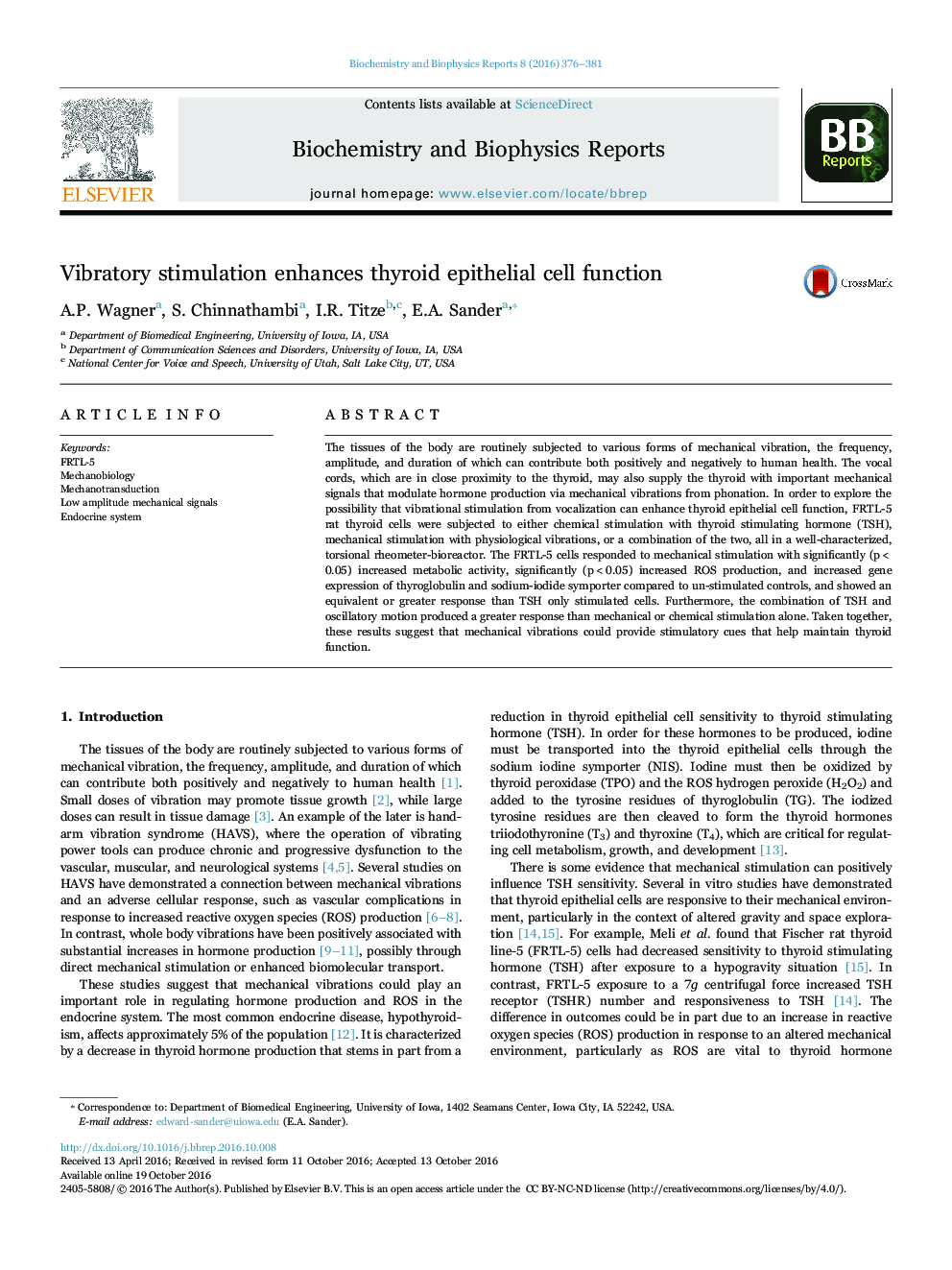| Article ID | Journal | Published Year | Pages | File Type |
|---|---|---|---|---|
| 8298510 | Biochemistry and Biophysics Reports | 2016 | 6 Pages |
Abstract
The tissues of the body are routinely subjected to various forms of mechanical vibration, the frequency, amplitude, and duration of which can contribute both positively and negatively to human health. The vocal cords, which are in close proximity to the thyroid, may also supply the thyroid with important mechanical signals that modulate hormone production via mechanical vibrations from phonation. In order to explore the possibility that vibrational stimulation from vocalization can enhance thyroid epithelial cell function, FRTL-5 rat thyroid cells were subjected to either chemical stimulation with thyroid stimulating hormone (TSH), mechanical stimulation with physiological vibrations, or a combination of the two, all in a well-characterized, torsional rheometer-bioreactor. The FRTL-5 cells responded to mechanical stimulation with significantly (p<0.05) increased metabolic activity, significantly (p<0.05) increased ROS production, and increased gene expression of thyroglobulin and sodium-iodide symporter compared to un-stimulated controls, and showed an equivalent or greater response than TSH only stimulated cells. Furthermore, the combination of TSH and oscillatory motion produced a greater response than mechanical or chemical stimulation alone. Taken together, these results suggest that mechanical vibrations could provide stimulatory cues that help maintain thyroid function.
Related Topics
Life Sciences
Biochemistry, Genetics and Molecular Biology
Biochemistry
Authors
A.P. Wagner, S. Chinnathambi, I.R. Titze, E.A. Sander,
